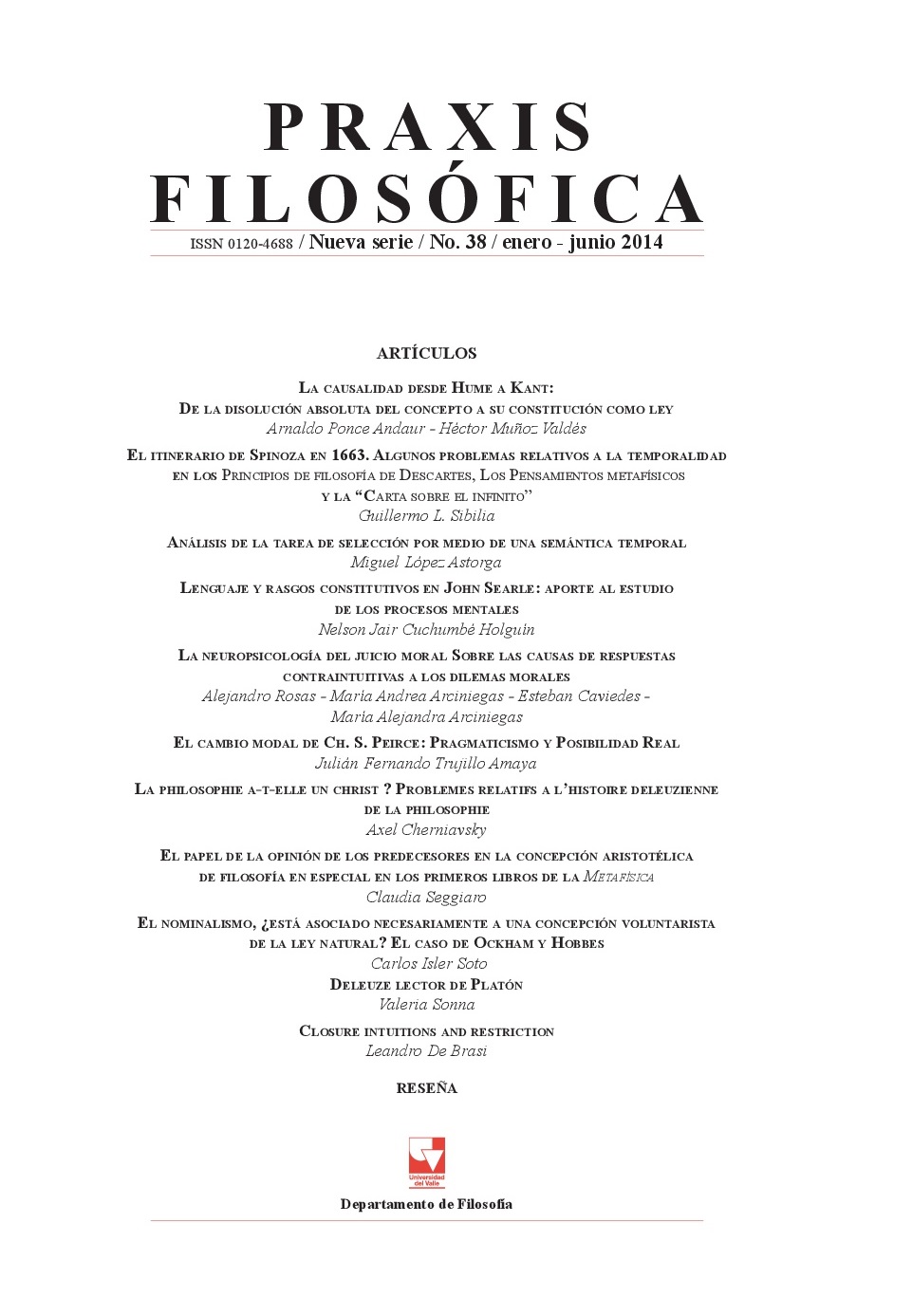La neuropsicología del juicio moral. sobre las causas de respuestas contraintuitivas a los dilemas morales
Palabras clave:
Dilemas morales, juicio moral, daños neuronales, empatía, utilitarismo, deontologíaContenido principal del artículo
Una literatura creciente en neuropsicología estudia el juicio moral aplicando dilemas morales a personas con daños neuronales o con rasgos de personalidad antisocial; y parece confirmar una tendencia al juicio utilitarista contra-intuitivo, es decir, estas personas aprueban el sacrificio de un inocente para salvar varias vidas. Argumentamos que las evidencias encontradas no respaldan la hipótesis de dos módulos morales (Greene et al. 2004), sino más bien una disfunción en la capacidad empática o en el procesamiento de emociones, que apoyaría una psicología moral de corte Humeano. Abogamos, además, por ampliar el explanandum: del juicio utilitarista contra-intuitivo al juicio moral contra-intuitivo sin más. Esto permitiría investigar experimentalmente un amplio rango de variables afectadas por disfunciones en la capacidad para la empatía.
Berker, Selim (2009): “The Normative Insignificance of Neuroscience,” Philosophy and Public Affairs 37: 293-329.
Ciaramelli, E., Muccioli, M., Ladavas, E. y di Pellegrino, G. (2007): “Selective deficit in personal moral judgment following damage to ventromedial prefrontal cortex”, Social Cognitive and Affective Neuroscience 2(2): 84-92.
Foot, Philippa (1967): “The Problem of Abortion and the Doctrine of Double Effect,” Oxford Review 5: 5-15
Greene, J.D., Sommerville, R.B., Nystrom, L.E., Darley, J.M. y Cohen, J.D. (2001): “An fMRI investigation of emotional engagement in moral judgment”, Science293: 2105-2108.
Greene, J.D., Nystrom, L.E., Engell, A.D., Darley, J.M. y Cohen, J.D. (2004): “The neural bases of cognitive conflict and control in moral judgment. Neuron 44: 389-400.
Greene J.D. (2007): “Why are VMPFC patients more utilitarian? A dual-process theory of moral judgment explains”, Trends in Cognitive Science 11(8): 322-323.
Greene, J.D. (2008): “The secret joke of Kant’s soul”, en W. Sinnott-Armstrong (ed.), Moral psychology: The neuroscience of morality, Cambridge: MIT Press, pp. 35–79.
Kant, I. (2002 [1785]). Groundwork for the metaphysics of Morals. trad. por Allen Wood. New Haven: Yale University Press.
Koenigs, M., Young, L., Adolphs, R., Tranel, D., Cushman, F., Hauser, M. y Damasio, A. (2007): “Damage to the prefrontal cortex increases utilitarian moral judgments”, Nature 446 (7138): 908-911.
Koenigs, M., Kruepke, M., Zeier, J. y Newman, J. P. (2012):“Utilitarian moral judgment in psychopathy”,Social Cognitive and Affective Neuroscience 7(6): 708-714.
Lough, S., Kipps, C.M., Treise, C., Watson, P., Blair, J.R., Hodges, J.R. (2006): “Social reasoning, emotion and empathy in frontotemporal dementia”, Neuropsychologia 44, 950-958.
McGuire, J., Langdon, R., Coltheart, M., y Mackenzie, C. (2009): “A reanalysis of the personal/impersonal distinction in moral psychology research”, Journal of Experimental Social Psychology 45(3): 577–580
Mendez, M.F., Anderson, E. y Shapira, J.S. (2005): “An investigation of moral judgment in frontotemporal dementia”, Cognitive and Behavioral Neurology18, 193-197
Mikhail, J. (2007): “Universal moral grammar: theory, evidence and the future”,Trends in Cognitive Sciences 11(4): 143-152
Moll, J., & de Oliveira-Souza, R. (2007): “Moral judgments, emotions and the utilitarian brain”, Trends in Cognitive Sciences 11(8): 319–321
Prinz, J. (2007). The Emotional Construction of Morals. New York: Oxford University Press.
Rosas, A. (2000). “Explicación y justificación. Hacia el naturalismo en la filosofía moral.” En Mentes Reales. La Ciencia Cognitiva y la Naturalización de la Mente. Bogotá: Universidad Nacional de Colombia/ Siglo del Hombre Editores, pp. 101-118.
Thomson, J. J. (1985): “The Trolley Problem”, The Yale Law Journal 94/6: 1395-1415.
Wiech K., Kahane G., Shackel N., Farias M., Savulescu J., Tracey I. (2013): “Cold or calculating? Reduced activity in the subgenual cingulate cortex reflects decreased emotional aversion to harming in counterintuitive utilitarian judgment”, Cognition 126(3): 364-72.
Zahn R, de Oliveira-Souza R, Bramati I, Garrido G, Moll J (2009): “Subgenual cingulate activity reflects individual differences in empathic concern”, Neurosci Lett 457:107–110.
Downloads

Esta obra está bajo una licencia internacional Creative Commons Atribución-NoComercial-CompartirIgual 4.0.
De acuerdo con nuestra política (Licencia Creative Commons CC BY-NC-SA 4.0) los artículos presentados y sometidos al proceso editorial en la revista Praxis Filosófica no tienen costo alguno para sus autores ni retribuciones económicas para la revista. El artículo de carácter inédito, producto de investigación o de algún proyecto que se presente a Praxis Filosófica, no podrá estar sometido a otro proceso de publicación durante el proceso que se lleve en nuestra revista.

